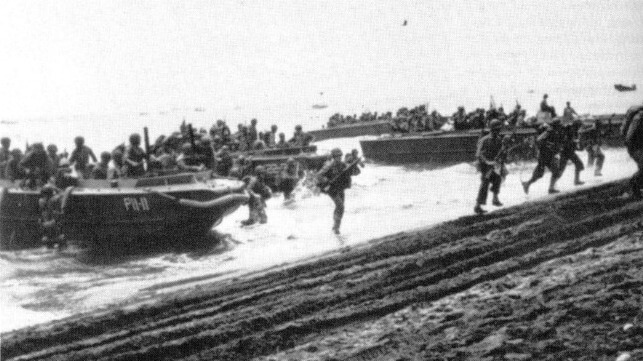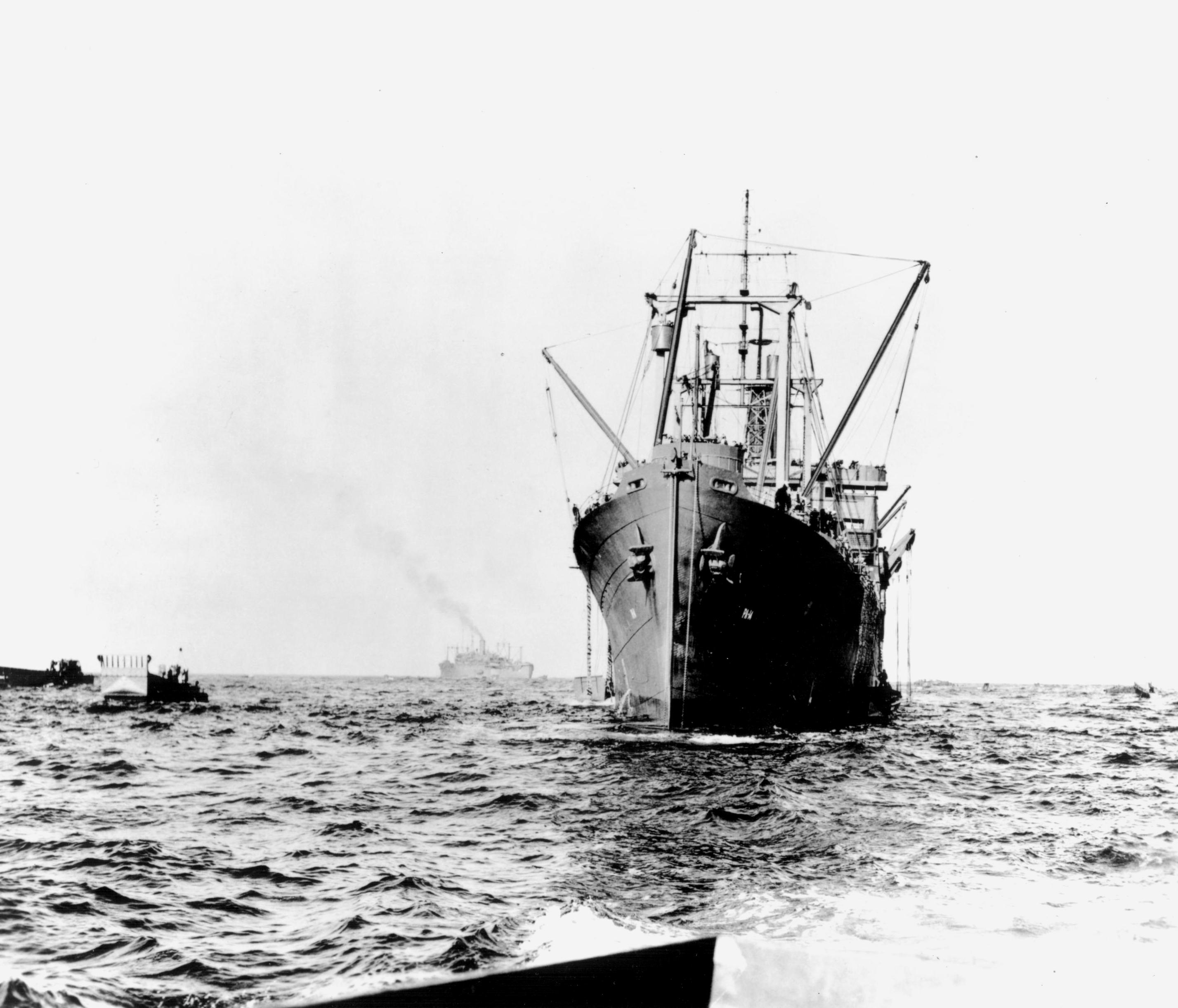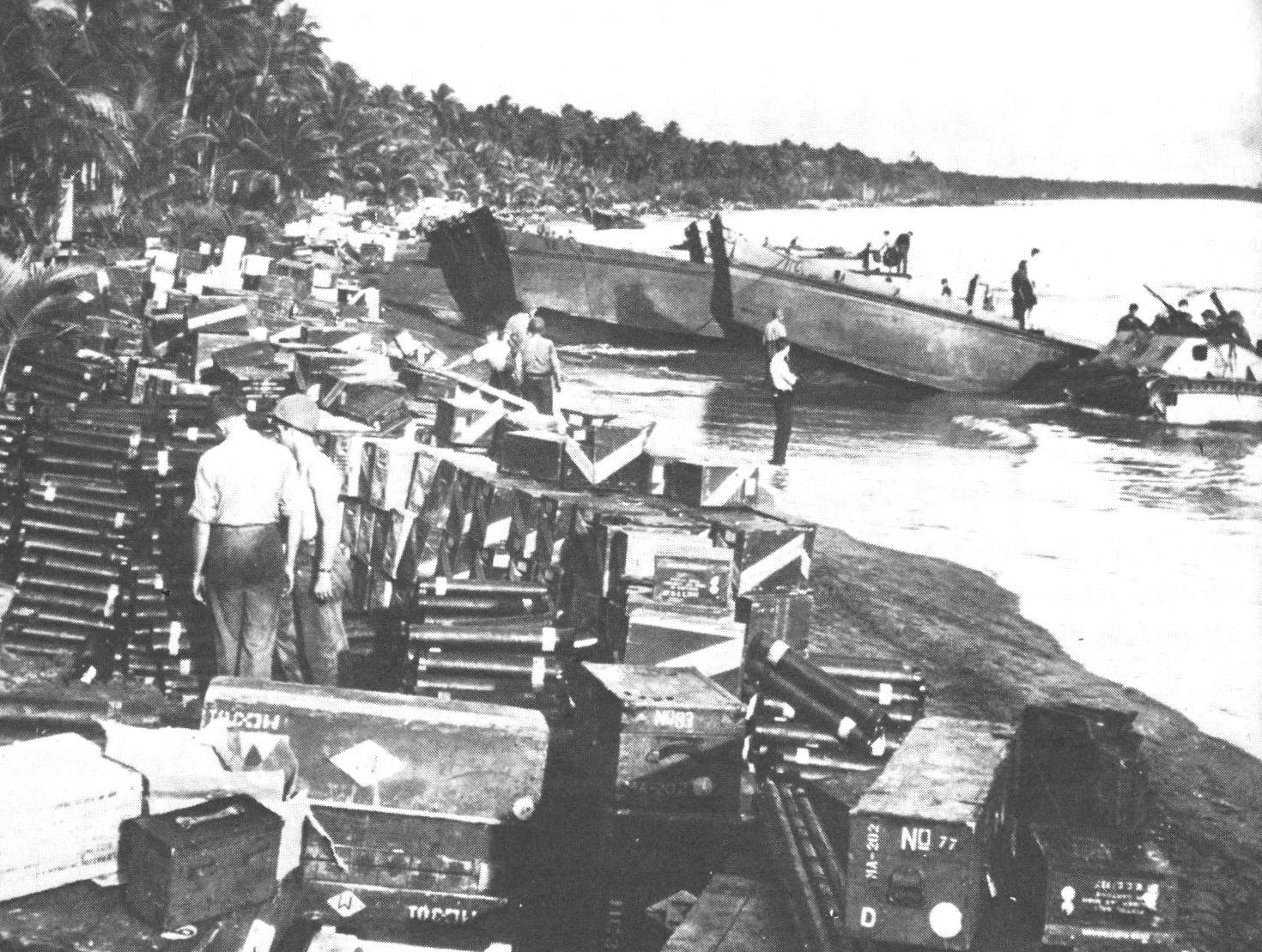Guadalcanal at 80: The USCG and the Island-Hopping Campaign

. . . this Reinforced Division not only held their important strategic positions despite determined and repeated Japanese naval, air, and land attacks, but by a series of offensive operations against strong enemy resistance drove the Japanese from the proximity of the airfield and inflicted great losses on them by land and air attacks. The courage and determination displayed in these operations were of an inspiring order. - Presidential Unit Citation for the First Marine Division, “Reinforced”
Called “The Canal” by the men who fought there, Guadalcanal was the first Allied amphibious operation of the Pacific War and a laboratory for analyzing the latest amphibious tactics and landing craft designs. It was the first of the U.S. Navy’s famous “island-hopping” operations and the first significant test of U.S. Marines against experienced Japanese troops. It was also the campaign where the Coast Guard forged a relationship with the Marine Corps that grew stronger over the course of the war and continues to this day.
With its lush foliage and tropical waters, Guadalcanal was a picturesque contrast of deep green and azure blue. However, for all its natural beauty, Guadalcanal was a fearful place to fight a war. On the Canal, the Americans battled two enemies—the Japanese and the jungle. In late summer and early fall, the island boasted a steamy climate with searing temperatures and monsoon rains. Man-eating sharks and saltwater crocodiles patrolled the local waters. Top it off with swarms of disease-ridden mosquitoes carrying dengue fever, malaria, and yellow fever, and it is clear why marines called Guadalcanal “the green hell.”
 The USCG-manned USS Hunter Liggett, foreground (USN)
The USCG-manned USS Hunter Liggett, foreground (USN)
Before the start of World War II, American military tacticians foresaw the need to develop an amphibious capability. In the spring of 1941, the Navy began preparations for large-scale beach landing operations. It formed Transport Division Seven out of former U.S. Army troop transports, including the Coast Guard-manned USS Hunter Liggett, USS Leonard Wood, and USS Arthur Middleton. The planners also conscripted Coast Guard boatswains, coxswains and surfmen to take advantage of the service’s beach and surf-zone expertise.
By June 1941, the Navy began conducting amphibious training in the Chesapeake Bay, near Solomons, Maryland, and on the North Carolina coast at Onslow Bay. Coast Guard coxswains from boat stations across the country reported for duty and demonstrated their shallow-water skills with landing craft. The stanza from a poem composed by an anonymous Coast Guardsman aboard the Hunter Liggett recounted the hectic training schedule for the transport division at that time: “Some day will end this squirrel race, and there’ll be many a smiling face, to see a cutter take its place, in Trans Division Seven.”
During the spring of 1942, the Japanese military juggernaut remained unstoppable in the Pacific. By mid-summer, the enemy had captured Guam, Wake Island, Hong Kong, Singapore, vast areas of China, the Philippines, Southeast Asia, the Dutch East Indies as well as the Solomon Islands. Earlier, in April, Allied naval strategists decided to make a stand in the Solomons at Tulagi Island, the capital of the southern Solomons and the only significant settlement in the British protectorate. The Japanese had occupied the small island with a garrison of 800 Imperial Japanese Navy troops and used it as a seaplane base for reconnaissance missions.
Allied naval strategists later changed the Solomons assault plan to include a large island located 20 miles west of Tulagi, after the Japanese began building an airfield there. Named by Spanish explorers for a town in Spain, the island of Guadalcanal featured an 8,000-foot mountain ridge stretching along its length. Enemy aircraft flying from Guadalcanal could threaten Allied supply lines to Australia and New Zealand. The remote island would prove one of the farthest distances from home waters the Coast Guard had operated since U.S. Revenue Cutter McCulloch fought in the 1898 Battle of Manila Bay.
 Supplies landed on the beach at Guadalcanal (USN)
Supplies landed on the beach at Guadalcanal (USN)
Beginning Aug. 7, 1942, Coast Guardsmen served alongside the Marines in the hard-fought battle for the island. They operated a naval base of landing craft within the Marines’ defensive perimeter ensuring the steady flow of fresh troops, supplies, and equipment. Coast Guardsmen also volunteered to operate Marine land positions, serve artillery pieces and provide infantry support. And, when the Marines needed boats for reconnaissance, patrol and combat missions, Coast Guard crews remained Semper Paratus, always ready. Douglas Munro, the only Coast Guardsman awarded the Medal of Honor, received it posthumously for performing a traditional Coast Guard mission—rescuing those who go in harm’s way. In this case, his flotilla of landing craft rescued an ambushed Marine regiment at Pt. Cruz, Guadalcanal.
By the end of 1942, the defeat of Japanese military forces on the Canal appeared certain. U.S. Army units relieved the Marines and, by February 1943, the U.S. military declared Guadalcanal secured of Japanese forces. However, Coast Guard blood would be spilled there once again in 1945, when the Coast Guard-manned attack transport USS Serpens carrying a full cargo of ammunition accidentally detonated while the ship lay anchored offshore. The explosion disintegrated the ship killing all but two of the 200 Coast Guard crewmembers. The explosion proved the largest single loss of life in Coast Guard history.
Coast Guard members serving on the Canal distinguished themselves in combat, making the campaign the most honored combat operation in service history. President Franklin Roosevelt awarded the Presidential Unit Citation (PUC) to the “First Marine Division, Reinforced” with the word “Reinforced” honoring support units, such as the Coast Guardsmen serving on the island. The two services fought side-by-side to defeat the enemy and a Coast Guard coxswain or beachmaster was often the last comrade a Marine might see before hitting enemy-held beaches or marching into the jungle.
In addition to the PUC (which equates to the Navy Cross Medal on an individual basis), various Coast Guardsmen received special honors. These included the Purple Heart Medal, Navy Commendation Medal, Silver Star Medal, and Navy Cross Medal, in addition to Douglas Munro’s Medal of Honor. A number of these Coast Guard heroes also became namesakes for military vessels, and Coast Guard cutters and installations, including the new Douglas A. Munro Coast Guard Headquarters Building in Washington, D.C.
In the Pacific theater of operations, the Coast Guard participated in all major amphibious operations, including Tarawa, Saipan, Guam, Peleliu, Iwo Jima, and Okinawa. Coast Guardsmen also operated hundreds of Army and Navy supply ships that supported Allied troops and fighting fleets in the Pacific. And, after the capitulation of the Japanese, Coast Guard-manned ships participated in Operation “Magic Carpet,” transporting thousands of troops home to the U.S.
During the Guadalcanal Campaign, Coast Guardsmen lived up to the service’s core values of honor, respect and devotion to duty. After the hard-fought battle, the Allies would remain on the offensive for the rest of the Pacific War while the Japanese fought a lengthy retreat back to their home islands.
William Thiesen is the Coast Guard Atlantic Area Historian. This article appears courtesy of The Long Blue Line and may be found in its original form here.
The opinions expressed herein are the author's and not necessarily those of The Maritime Executive.
